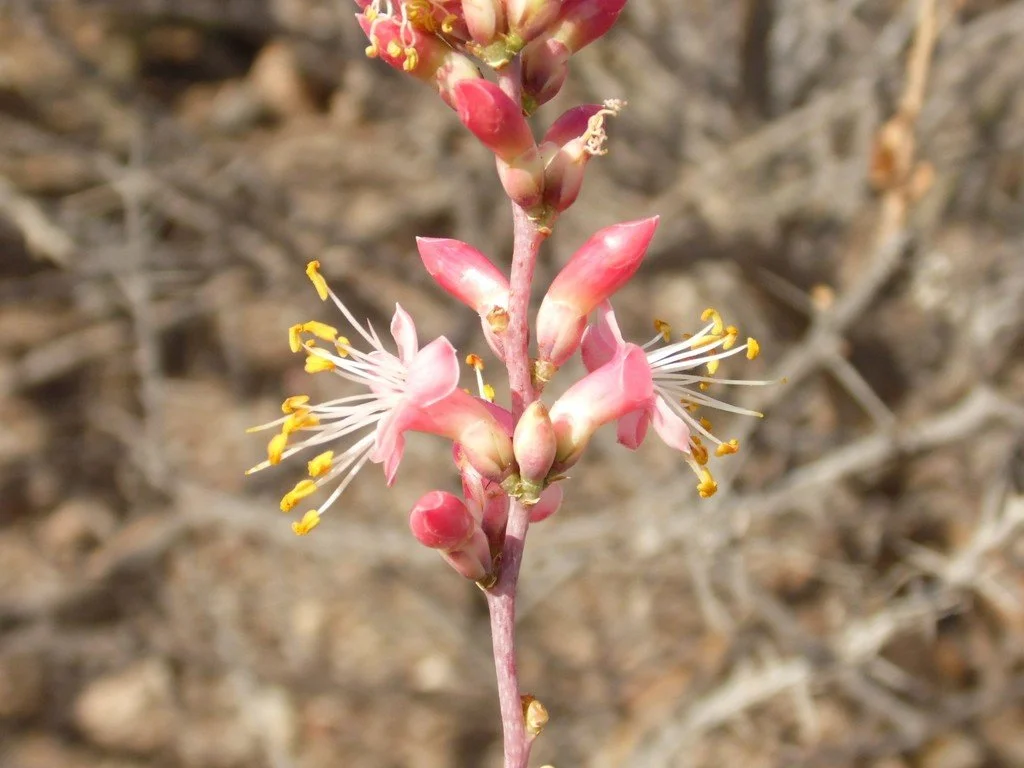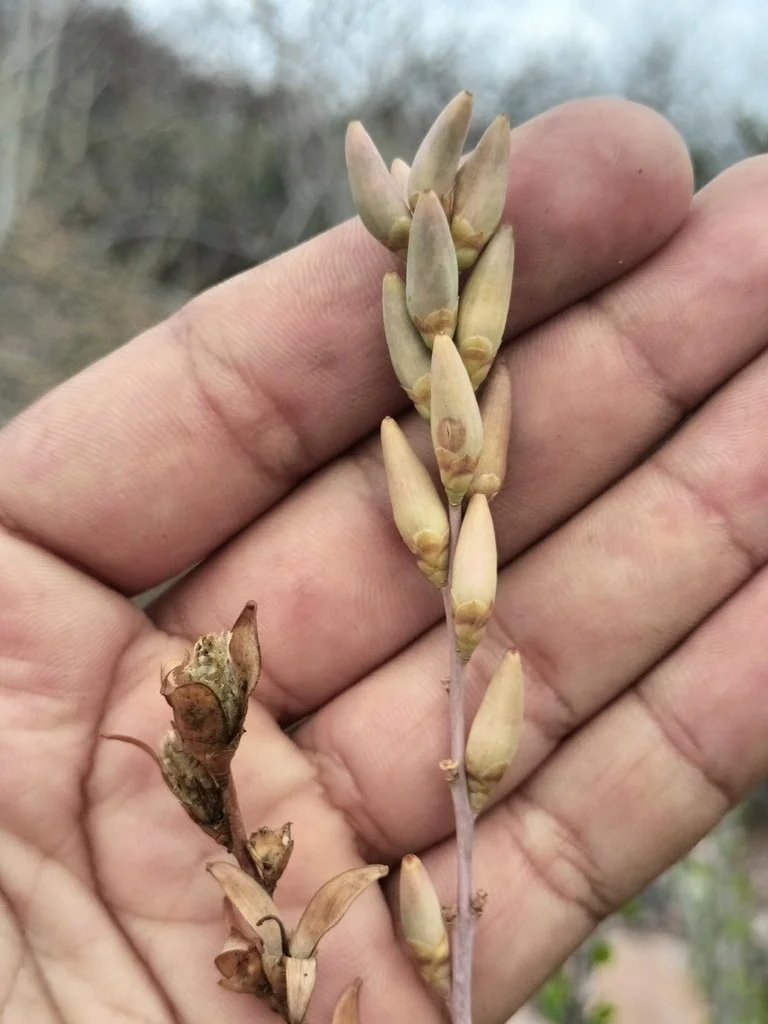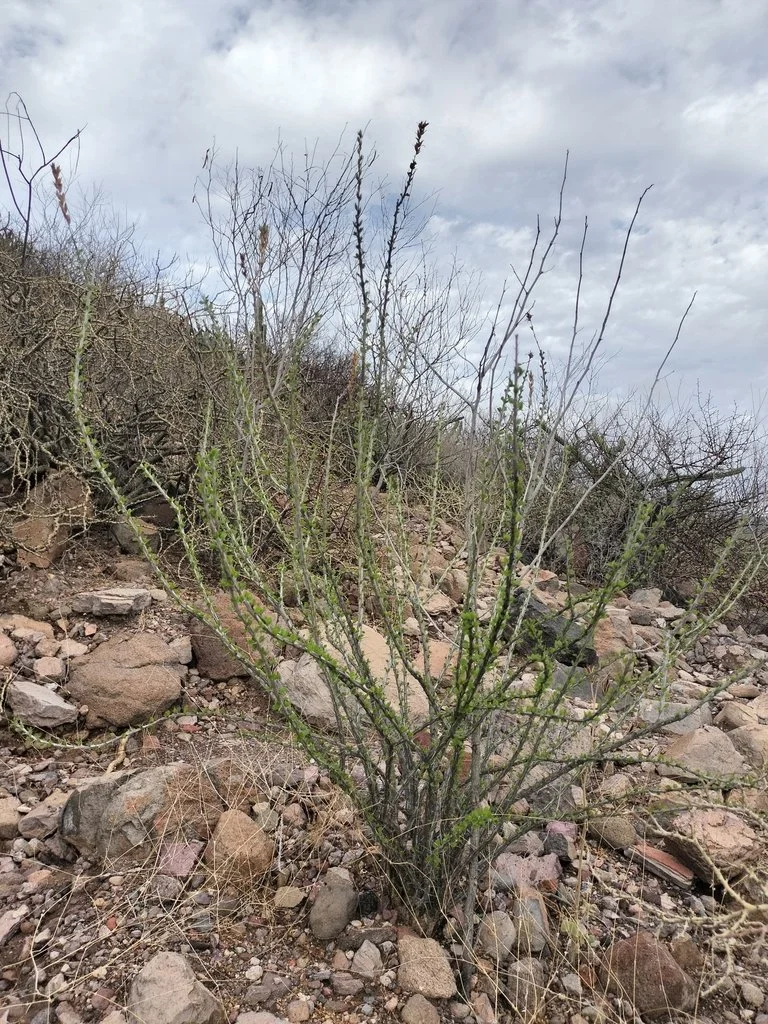Pichilingue
Fouquieria burragei
Sometimes called gulf ocotillo in English, this plant is a shrub to small tree 20’ in height (more typically it is 10-15’ tall). It consists of thin, thorny branches sprawling upwards from a central base, which gives the plant a fan-shaped appearance. The bright-green leaves are small, oval and emerge in pairs alternating between the thorns. After rains, flowers begin to emerge. The inflorescence is variable, shaped elongate, narrow, and upright, and emerges from just above the base of older inflorescences. The distinctive flowers have a short, white to rose-red corolla, with numerous long, exerted stamens. Flowering can occur most anytime from spring through fall. This species is more open and structurally interesting than our local ocotillo. Most plants will be deciduous in winter, though warm weather may encourage leaf growth during that time.
It is very similar in vegetative form to Fouquieria diguettii, but both are easily distinguished by F. burragei's white to pink flowers. F. burragei has a chromosome number of 2n = 72, as opposed to 2n = 48 for F. diguettii, which may suggest that F. burragei is a possible hybrid species with F. diguettii and a now extinct white-flowered diploid species.
Plant in full sun to bright shade. This plant requires low water, but watering established plants in the ground deeply 2-3 times a month will keep plants looking good. Water once a month in winter if there is no rain. In containers, water 2-3 times a week. Plants begin to suffer damage below 27°F. Keep it in a container that can be moved indoors or under shelter during freezing weather if you live in a colder region.
Ethnobotanical uses are not well-documented but plants in this genus have been used as medicine almost wherever they occur. Flowers are edible.
This species is distributed from Bahía Concepción south to the vicinity of La Paz and on Espiritu Santo Island in Baja California Sur. The populations of this plant are widely scattered, and gene flow between isolated populations is likely non-existent. It is found on rocky slopes with shallow sandy to volcanic clay soils, up to 650’ in elevation. These populations are threatened by introduced goats and habitat loss because of tourism, development, and other human activities.
The flowers of this species are most often whitish. Photo by Jose Luis Leon de la Luz, iNaturalist
Sometimes the flowers are more pinkish, photo by Tania Pérez Fiol, iNaturalist
The seed capsules, photo by Augusto Olmos Mercado, iNaturalist
The typical growth form of this species, photo by Augusto Olmos Mercado, iNaturalist
The base eventually peels, photo by Ginni Callahan, iNaturalist
Taller plants are getting harder to find in the wild. Photo by Ginni Callahan, iNaturalist







